3.1 操作printLots(L,P)打印L中那些P所指定位置上的元素
1. ArrayList添加元素的方法:add。ArrayList P = new ArrayList<>(){{add(1);add(2);}};
2. 嵌套循环可以用于打印指定位置的元素
import java.util.ArrayList;import java.util.Iterator;import java.util.List;/** * P67 习题3.1 * 题目要求:给定表L和表P,他们包含升序排列的整数。操作printLots(L,P)打印L中那些P所指定位置上的元素。 * 示例:如果P=1,3,4,6 那么L中位于第1,第3,第4,第6位置上的元素被打印出来 * 注意:只可使用public型的Collections API容器操作 */public class _3_1 { public static <AnyType> void printLots(List<AnyType> L, List<Integer> P){ long startTime = System.currentTimeMillis(); Iterator<AnyType> iterL = L.iterator(); Iterator<Integer> iterP = P.iterator(); int start = 0; AnyType itemL = null; Integer itemP = 0; while (iterP.hasNext()){ itemP = iterP.next(); System.out.println("Looking for position" + itemP); while (start < itemP && iterL.hasNext()){ start++; itemL = iterL.next(); } System.out.println(itemL); } long endTime = System.currentTimeMillis(); System.out.println("系统运行时间为:"+ (endTime-startTime) + "ms"); } public static void main(String[] args) { ArrayList<String> L = new ArrayList<>(){{add("aa");add("bb");add("cc");}}; ArrayList<Integer> P = new ArrayList<>(){{add(1);add(2);}}; printLots(L,P); }}
3.2 通过调整链(而不是数据)来交换相邻的元素
1.单链表和双链表的定义与使用
2.交换链表元素时要考虑详细,最好按顺序依次更改
3.先调用单链表,再调用双链表会出现双链表调用少节点的问题,反之则没有问题。我认为是实现链表的类实现的有问题,导致先调用单链表时,对节点的后继节点造成了改变,导致节点丢失。
public class _3_2 {
/**
*P67 习题3.2
* 题目描述:通过调整链(而不是数据)来交换相邻的元素
* 注意:分别使用单链表和双链表完成
*/
//创建一个链表的类
static class Node {
int val; //数值 data
Node next; // 结点 node
Node prev;
Node(int x) { //可以定义一个有参构造方法,也可以定义一个无参构造方法
val = x;
}
public Node() {
}
// 添加新的结点
public void add(int newVal) {
Node newNode = new Node(newVal);
if (this.next == null) {
this.next = newNode;
newNode.prev = this;
newNode.next = null;
}else{
this.next.add(newVal);
}
}
public void print() {
System.out.print(this.val);
if (this.next != null) {
System.out.print("-->");
this.next.print();
}
}
}
//单链表
//beforeP 是需要交换的两个节点的前面的节点
public static void swapWithNext(Node beforeP){
Node P,afterP;
P = beforeP.next;
afterP = P.next;
beforeP.next = afterP;
P.next = afterP.next;
afterP.next = P;
}
//双链表
//同上,省略错误检查
public static void swapWithNextDouble(Node p){
Node beforep , afterp;
beforep = p.prev;
afterp = p.next;
p.next = afterp.next;
beforep.next = afterp;
afterp.next = p;
p.next.prev = p;
p.prev = afterp;
afterp.prev = beforep;
}
public static void main(String[] args) {
Node p = new Node();
p.val = 1;
p.add(3);
p.add(5);
p.add(7);
p.add(9);
System.out.println("Origin : ");
p.print();
//p.next.next = 5 交换5和7
swapWithNextDouble(p.next.next);
System.out.println("\nDouble chain : ");
p.print();
//p.next = 3 将会交换7和5
swapWithNext(p.next);
System.out.println("\nSingle chain : ");
p.print();
}
}
3.3 实现MyLinkedList的contaqins例程
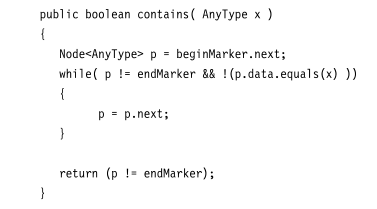
3.4 给定两个已排序的表L1和L2,只使用基本的表操作编写计算L1∩L2的过程
使用迭代器,循环比较,添加到结果列表中即可
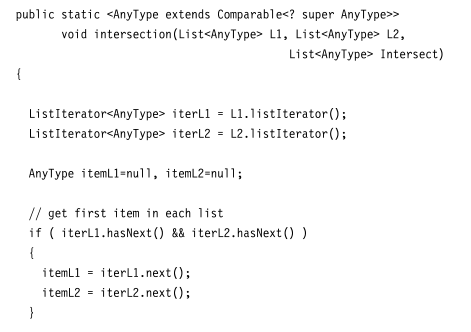
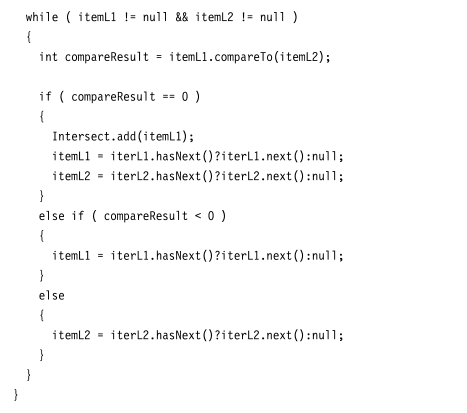
3.5 给定两个已排序的表L1和L2,只使用基本的表操作编写计算L1∪L2的过程
使用迭代器,循环比较,添加到结果列表中即可
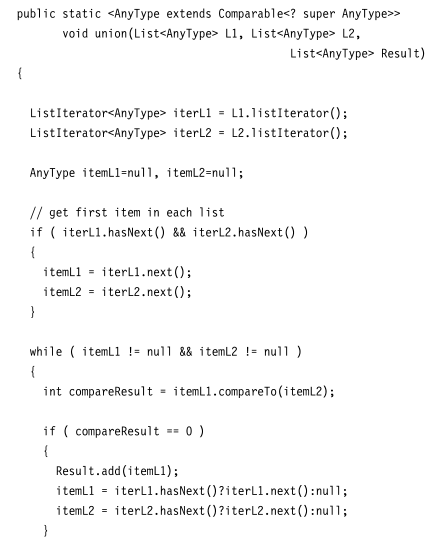

3.11 假设单链表使用一个头节点实现,无尾节点,只保留对该头节点的引用,编写一个链表类
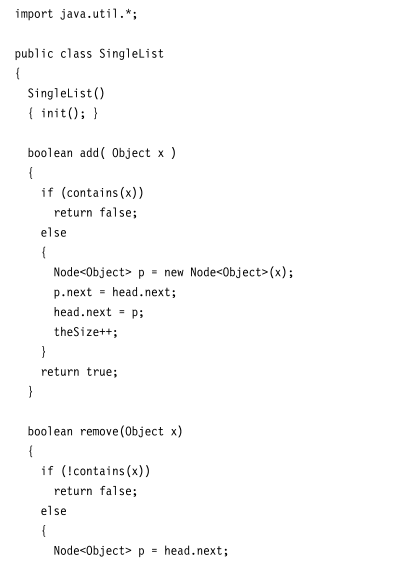
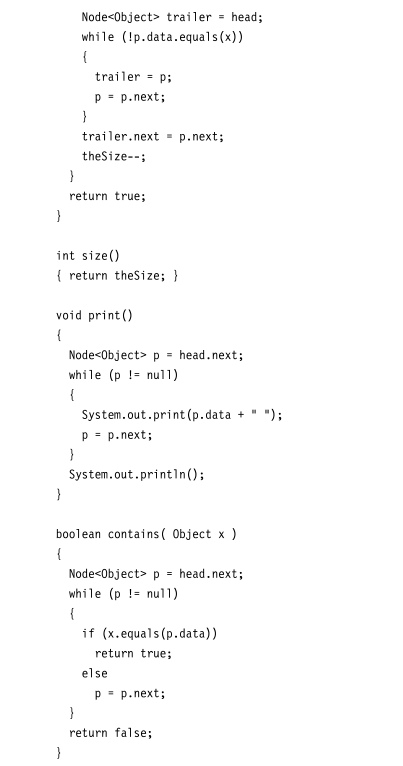

3.25 提出一种数据结构支持栈的push和pop操作以及第三种操作findMin,它返回该数据结构的最小元素。所有操作均以O(1)最坏情形运行

维持两个栈,一个S,用来push和pop,另一个M用于保持最小值
3.26 用一个数组实现三个栈结构

一个自顶向下生长,一个自底向上生长,第三个从中间生长(上或者下)。一旦第三个栈碰到了其他两个栈,就将其移动。一个合理的策略是,将其中间移到上下两个栈的中间
3.31 用单链表实现栈⭐
import java.util.*;
/**
* P68 习题3.31
* 题目要求:单链表实现栈。
* Attention:head本身只用来表示头节点,而与节点的后继没有联系
*/
public class SingleStack<AnyType> {
SingleStack(){
head = null;
}
void push(AnyType x){
Node<AnyType> p = new Node<AnyType>(x, head);
head = p;
}
AnyType top(){
return head.data;
}
void pop(){
head = head.next;
}
private static class Node<AnyType>{
Node(){
this(null,null);
}
Node(AnyType x){
this(x,null);
}
Node(AnyType x , Node p){
data = x;
next = p;
}
AnyType data;
Node next;
}
private Node<AnyType> head;
}











